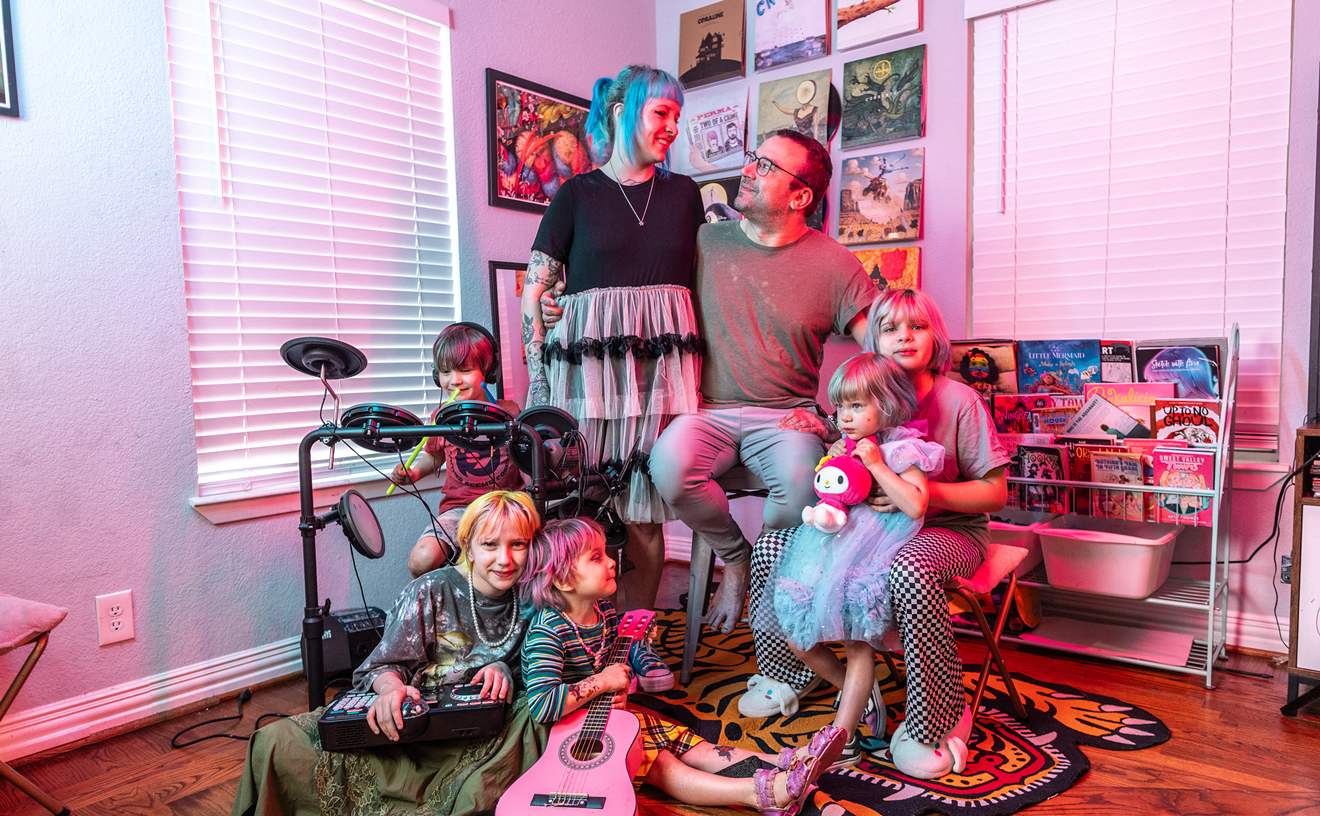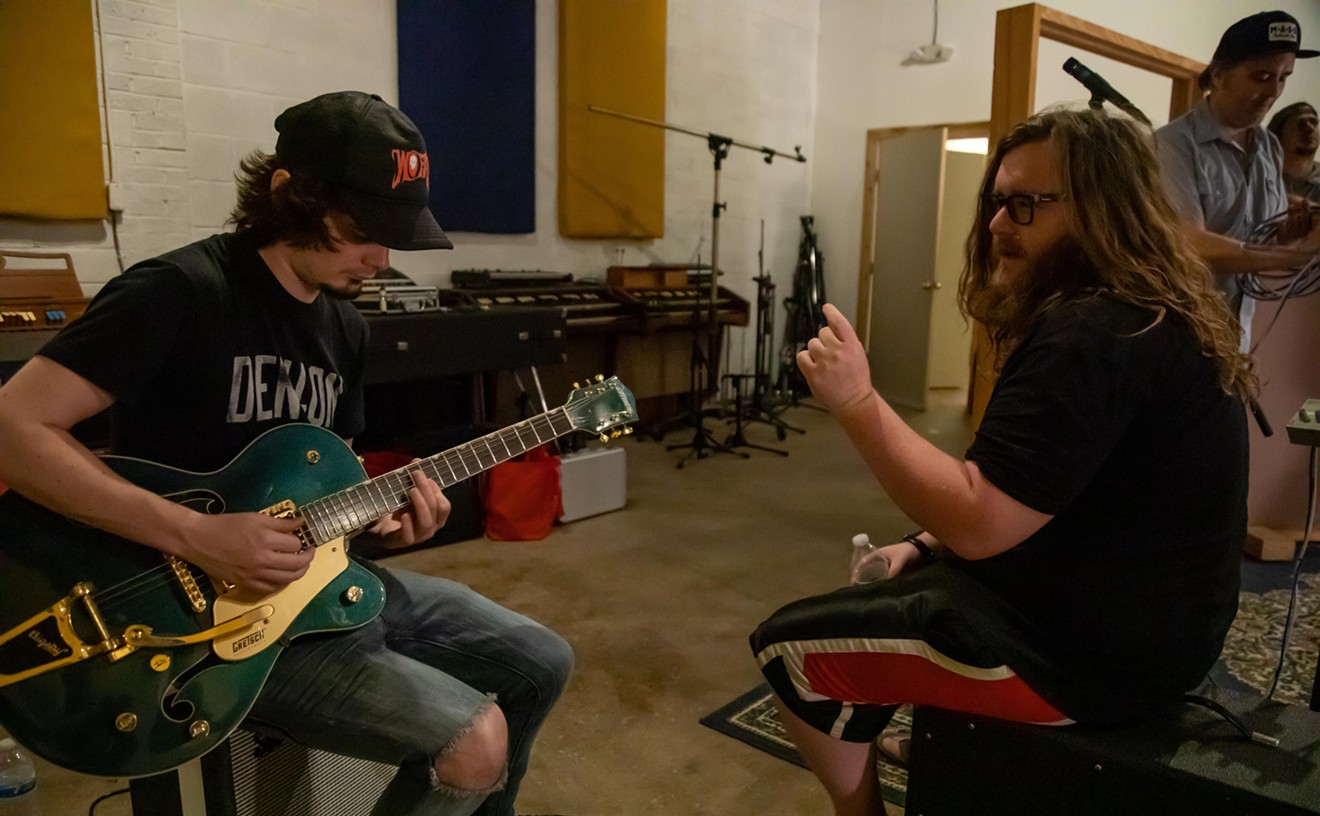It was well before midnight when the police scanners first started heating up with chatter about a need for assistance at Fair Park. It wasn't a riot happening at Electric Daisy Carnival, the 10-hour electronic music festival taking place there Saturday; these were just medical calls. But, for a couple hours there, they rang constantly.
On-site, off-duty medical, fire-rescue and police officers hired to provide added security and medical assistance at the event were overwhelmed. They needed help. After the festival promoted by the Los Angeles-based Insomniac Events drew some 11,000 attendees to its inaugural Dallas offering last year, this year's 23,000 or so electronic music fans were proving to be a lot to handle. The medical aid center in particular was inundated with too many revelers stopping by with complaints of overheating and dehydration. Alcohol seemed a likely culprit. Drugs, too, although that was impossible to prove.
"It's been pretty chaotic," acknowledged Lieutenant Samuel L. Friar, the ranking on-site Dallas Fire-Rescue official, after having watched yet another festival attendee get loaded into an emergency vehicle for a trip to a nearby hospital.
Shortly after midnight, as many as 10 emergency medical vehicles had already been dispatched the festival grounds' way and were traveling a nearly constant loop. Over the course of the night, 30 attendees would be hospitalized, far more than the city felt equipped to deal with. After instructing EMS ambulances to start dropping those needing emergency care at other local hospitals for fear of overwhelming the nearby Baylor Medical Center's emergency room, officers began setting up medical and fire-rescue command posts on the grounds. Then they put into action a "soft close" plan for the event shortly after 1 a.m., a full hour before the festival's scheduled end.
While acknowledging that the crowd numbers still fell well short of the site's capacity of nearly 43,000, fire officers started shutting down the indoor stages in the Automotive and Centennial buildings, claiming each of these rooms' specific capacities had been exceeded. As four different DJs launched into their festival-closing sets in the buildings along the Fair Park esplanade, fire officers set off the inside fire alarms, asked the performers to stop performing and ordered the music and lights to be turned down. They then began herding the crowds out toward the exits. When all was done, officers had slapped seven citations on Insomniac Events—two for overcrowding, two more for failure to obtain a count of occupants and three for obstruction of justice (promoters were less than thrilled, apparently, when asked to turn the lights on and the sound off).
The officers had their reasons. They knew what the promoters didn't—that, among the 30 hospitalizations, there was also a death. Andrew James Graf of Argyle, 19, was pronounced dead at Baylor late Saturday night after on-site CPR administration proved ineffective. The cause of his death is still unknown.
Still, by Monday morning, local TV outlets and The Dallas Morning News in particular had plenty to run with. Focusing not on the fact that 22,000-plus had managed to enjoy themselves in the face of triple-digit temperatures, these media companies focused their sights on rave culture as a whole. That was hardly fair. With officers on-hand and tickets $75 a pop, this was hardly some sort of underground event. Nor was it an insecure one; to enter the grounds, festival attendees had to pass through three separate security checkpoints—one for ID checks (concert-goers had to be at least 18 years old), one for ticket checks and one for pocket checks.
Yes, some were wearing rather asinine outfits of next to nothing. Yes, their dancing to the incessant electronic music being blasted at them from all directions bordered on the absurd. Yes, many were sprawled out on the grass along the reflecting pool, staring up at the night sky or the many neon-colored art installations brought in for the event, likely entranced in a drug-induced haze. Yes, drug talk was everywhere: Performer 12th Planet, inside the Automotive Building during his set, announced over the microphone that he hoped that "everyone's peaking right now."
But consider this: Aside from the hospitalizations and unfortunate death, this all happened at last year's very similar, albeit smaller, inaugural event held at the same place. That one was deemed a "phenomenal event" by Fair Park executive general manager Daniel Huerta a few days after it had taken place.
This year, the reaction is quite different. Fueled by the fact that a 15-year-old girl died of an ecstasy overdoes at Insomniac Events' two-day Los Angeles Electric Daisy Carnival last year, held two weeks after the Dallas version, mainstream media types are crying foul. Same, too, goes for local politicians; outgoing Mayor Dwaine Carraway has already said that the city needs to be more careful about the kinds of events it books in the future.
The coming weeks should prove especially telling of the event's future. Insomniac, after having seen its Los Angeles event "postponed" by that city, will host its annual three-day party in Las Vegas this weekend. Vegas officials have already started discussing enhanced security and medical aid as a result of the Dallas festival. Meanwhile, Insomniac founder and chief executive Pasquale Rotella has already announced plans to dispute the citations issued to his company by Dallas.
Perhaps most telling of all, though, is this scene, which took place at the medical assistance command post located inside the Automotive Building at Fair Park, as the clocks approach 1 a.m. Sunday: With his staff calmly assisting flustered festival-goers in need of care, Dallas Emergency Medical Services director Paul E. Pepe surveyed the damage and offered something of a shrug at the harm being done. Like his on-site fire-rescue counterpart Friar, he was mostly annoyed that so many of his staff were needed at the last minute. Had they been better informed of the event, he said, the festival wouldn't have ended up eating as much of his department's resources as it did.
But as for the care his staff was providing? He didn't seem to think it was much of a burden.
"We do this all the time," he said. "This is like a three-car pileup or something. We just usually don't have this much color."
Breaking: Family Says 22-Year-Old Died After 2010 Electric Daisy Carnival in Dallas









